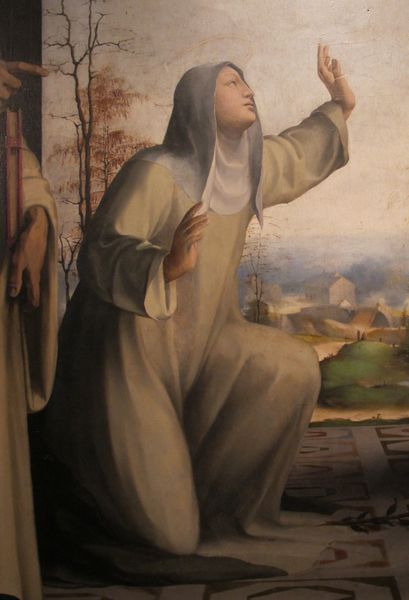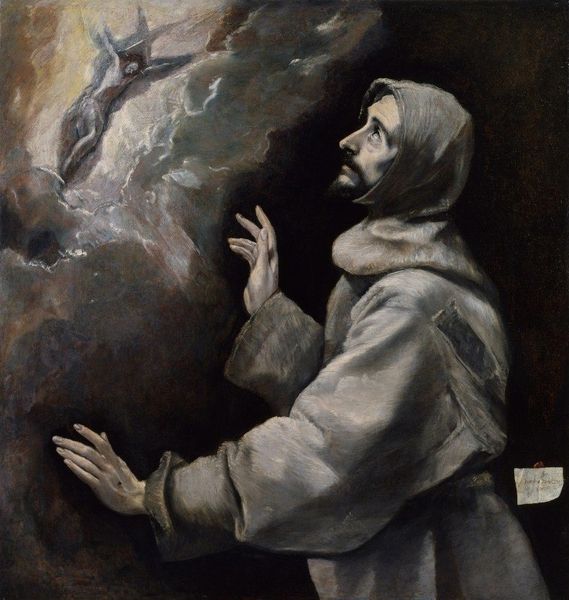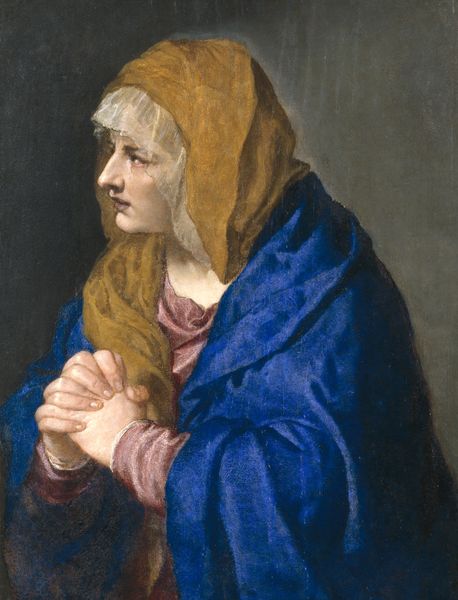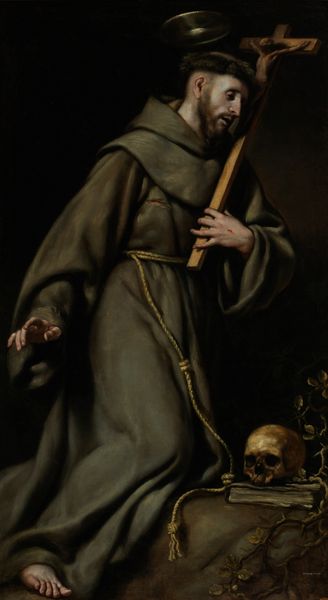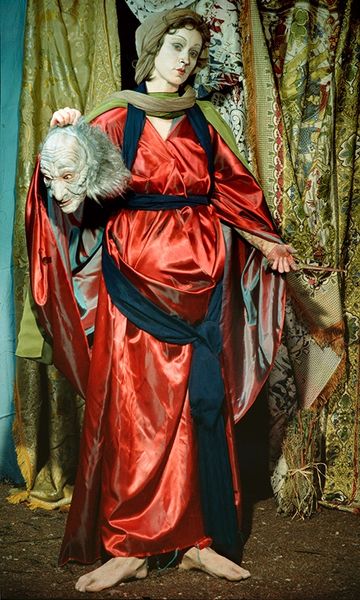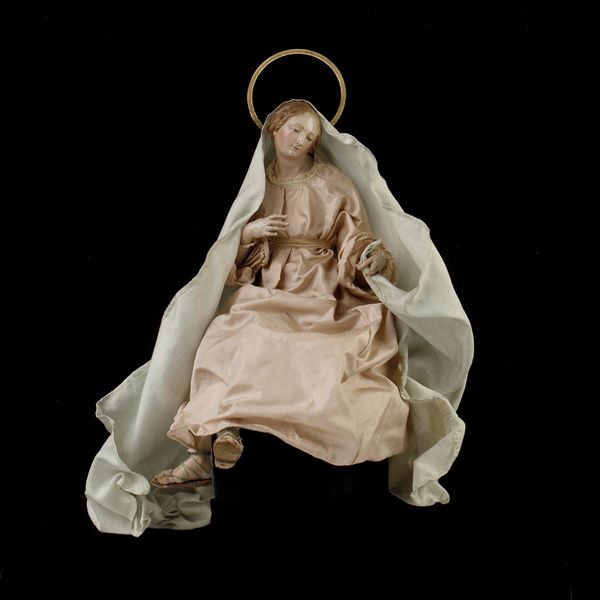
painting, oil-paint
#
portrait
#
painting
#
oil-paint
#
mannerism
#
figuration
#
11_renaissance
#
history-painting
#
academic-art
Copyright: Public domain
Editor: Here we have Plautilla Nelli's "Saint Catherine Receives the Stigmata," an oil painting likely from the Renaissance. It's striking how isolated and intensely focused St. Catherine appears in this dramatic landscape. What draws your eye to this piece, and how do you interpret it? Curator: It’s interesting to consider this piece within the context of the Italian Renaissance, particularly regarding women artists. Nelli, a self-taught nun, operated outside the conventional artistic institutions, establishing a workshop within her convent. A large altarpiece such as this served as not only a devotional object but also as a potent symbol of female agency and artistic capability within a male-dominated field. Note how the composition, although rooted in religious iconography, subtly centers St. Catherine's personal experience. How might the lack of precise dating influence our perception of this artwork's cultural impact? Editor: That's a fascinating point! If we knew exactly when this was painted, we could maybe connect it more directly to certain historical events or societal shifts affecting women's roles. Curator: Precisely. Consider how a patron commissioned or failed to commission art such as this influenced how artists chose specific imageries to engage viewers and communicate nuanced theological arguments, particularly around female sainthood. Moreover, Nelli's workshop, as an all-female space, offered a unique perspective—shaping how these narratives were visualized. In terms of composition, the rendering of St. Catherine receiving the stigmata shifts away from a divine intervention, toward an almost contemplative scene; notice how it softens the more graphic displays typical of St. Francis renditions? Editor: So, this is less about a straightforward religious scene and more about a statement on female artistry and the shifting depictions of women in religious contexts? Curator: Exactly. It’s a powerful interplay between the public expectations of religious art, the constraints placed upon women, and the innovative ways Nelli navigated and redefined those boundaries within her own artistic practice and those in her workshop. Editor: That’s a totally different way to look at it; seeing the art through that lens has made this much more meaningful. Curator: Indeed, considering such influences deepens our appreciation.
Comments
No comments
Be the first to comment and join the conversation on the ultimate creative platform.
